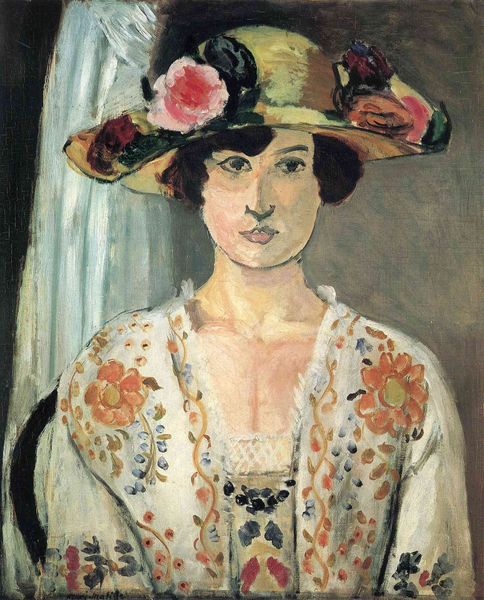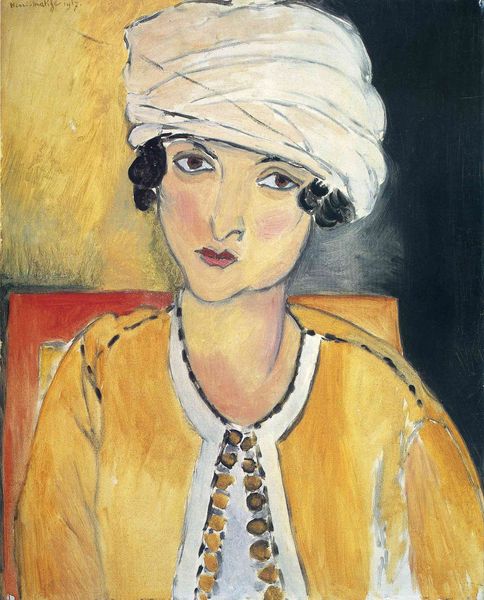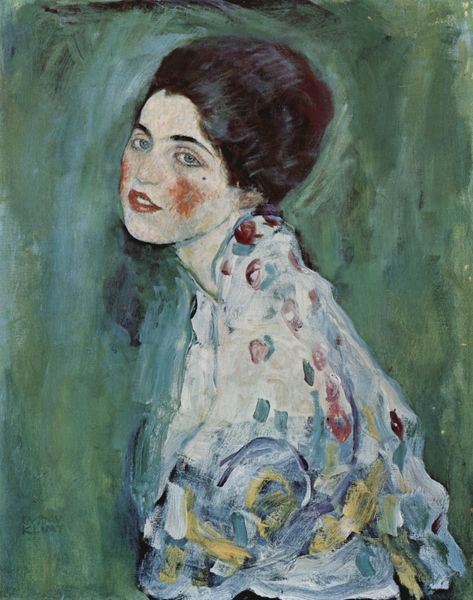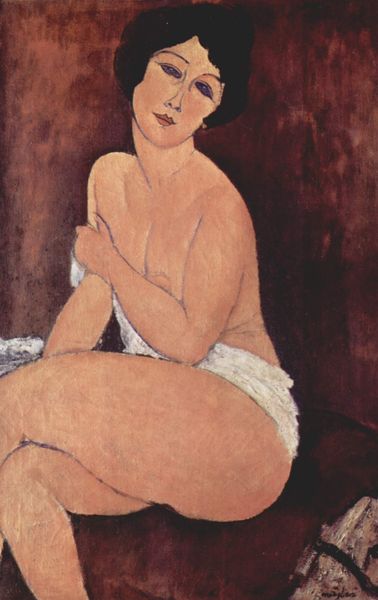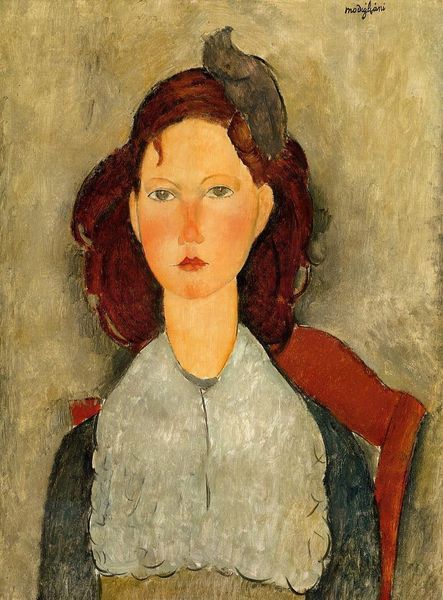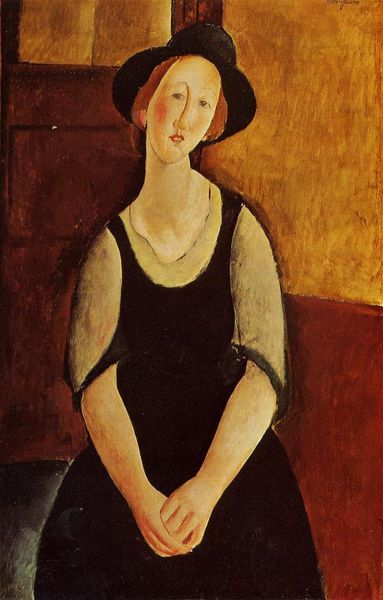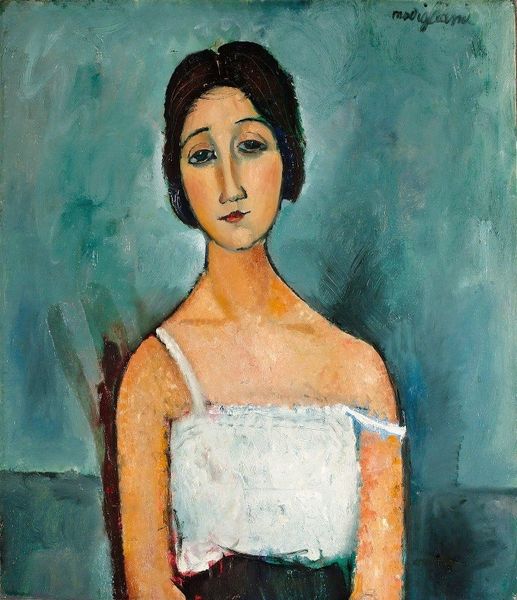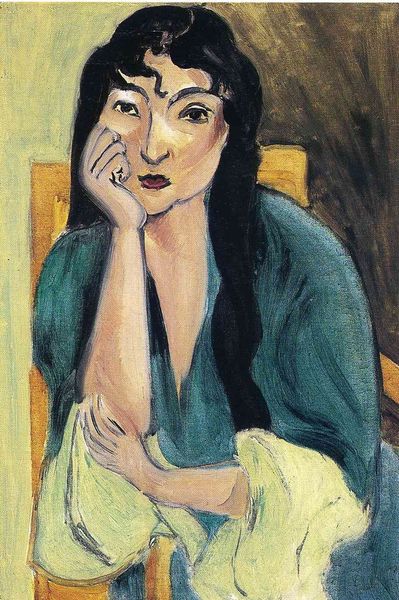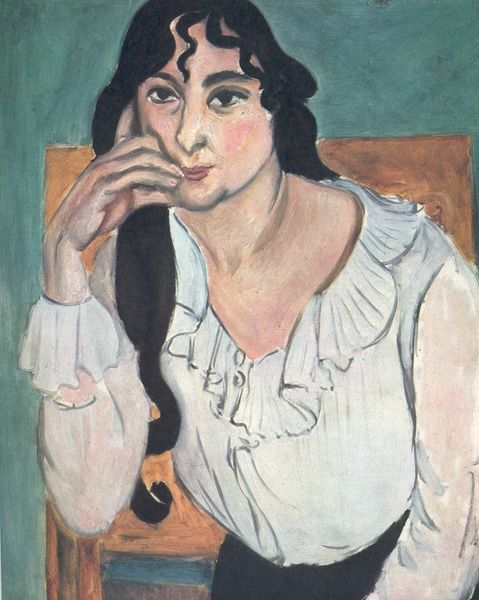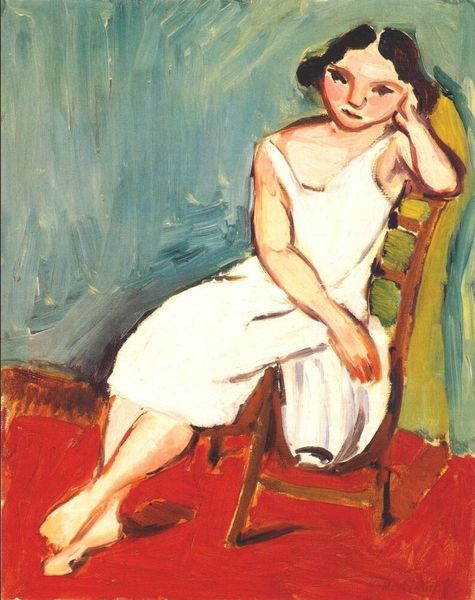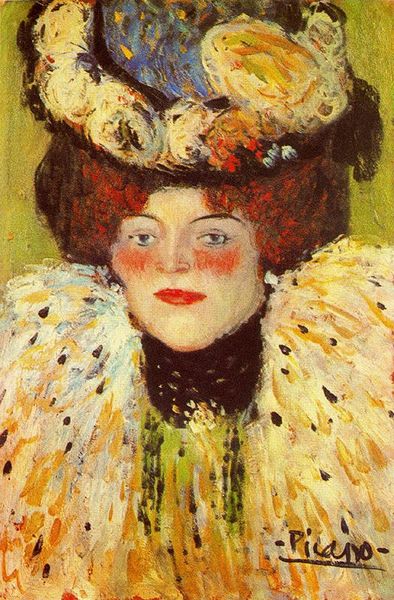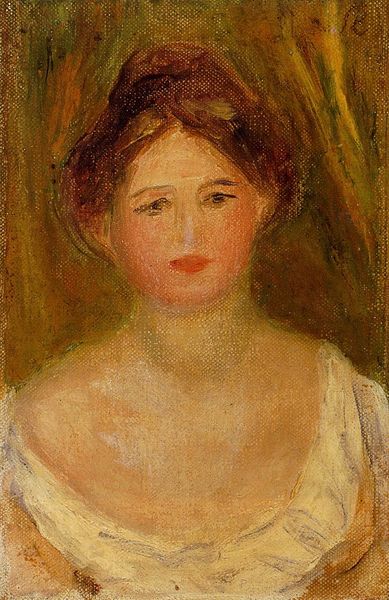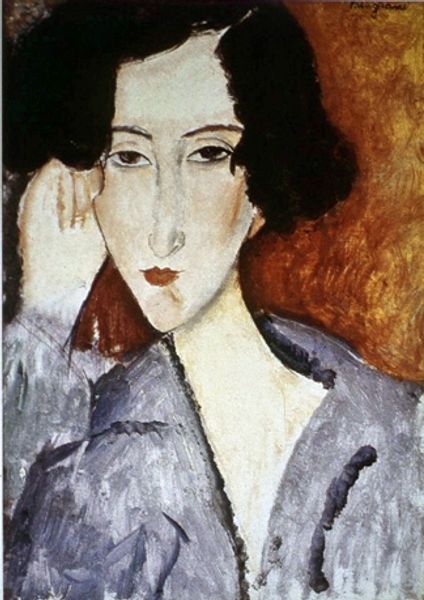
Copyright: Public domain US
Curator: Looking at Henri Matisse's "The White Feather" from 1919, an immediate sense of quiet contemplation washes over me. What do you see first? Editor: The hat. It's HUGE, a white explosion against that almost aggressive red. It’s like a cloud landed on her head and brought the drama. The rest is kind of muted in comparison, isn't it? Curator: Interesting. For me, it's about the construction of femininity at that time. Matisse used oil on canvas to depict not just a woman, but an idea of womanhood, the white feather becoming a symbol, an artifact. The materials become the message. Editor: See, I read it completely differently. The lady in the portrait feels…sad? Lost? Maybe she’s playing a role, hiding behind that feather boa. The colours clash so strongly, and it’s making me think this work represents some intense conflict between appearance and emotion. Curator: Well, given its place in Post-Impressionism, you might be right. The artist isn't attempting realism here. Notice the flatness of the colour blocks; the almost abstract way he treats form, almost pushing it into pure surface design and considering its mass manufacture as fine art for interior décor. Editor: It makes me question, "Who is she really, underneath it all?" She is consumed by that overpowering piece of plumage; what it could say about wealth, position, or just plain performance. I am still hung up on that sense of something bubbling underneath. It is powerful. Curator: Considering the social context then is fundamental. World War One had just ended, and you see here this tension, an undercurrent that speaks to post-war anxieties and redefinitions. Consumption on display like the mass manufactured "feather boa" almost dares the viewer to judge it as excessive. Editor: All right, you've made me think about the feather differently! Maybe it's not a cloud, but more like armour. A bright, fluffy shield. Thanks for bringing up its time. Now that I notice it I understand and, also, respect the artist more. Curator: Exactly. It reveals itself through its history. And isn't that exactly why these works endure and give pleasure even now. Editor: Yes, I agree with your sentiment, it speaks of its context but is beautifully constructed with its own drama.
Comments
No comments
Be the first to comment and join the conversation on the ultimate creative platform.
